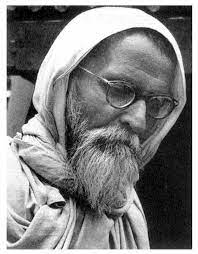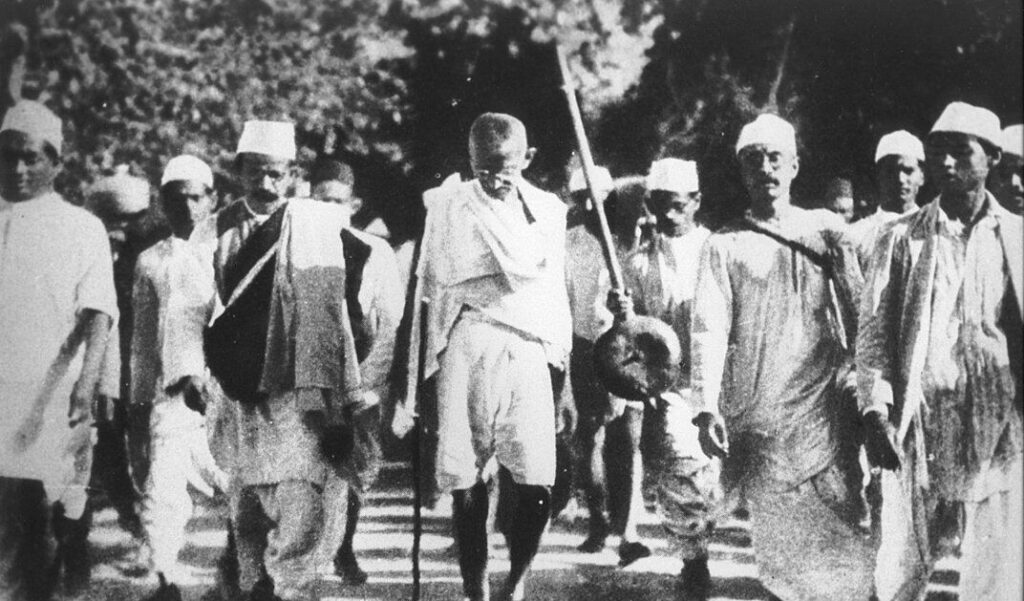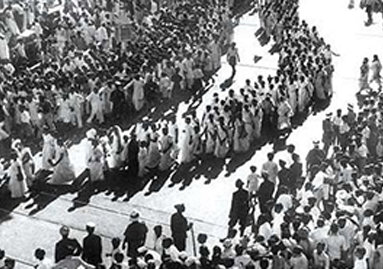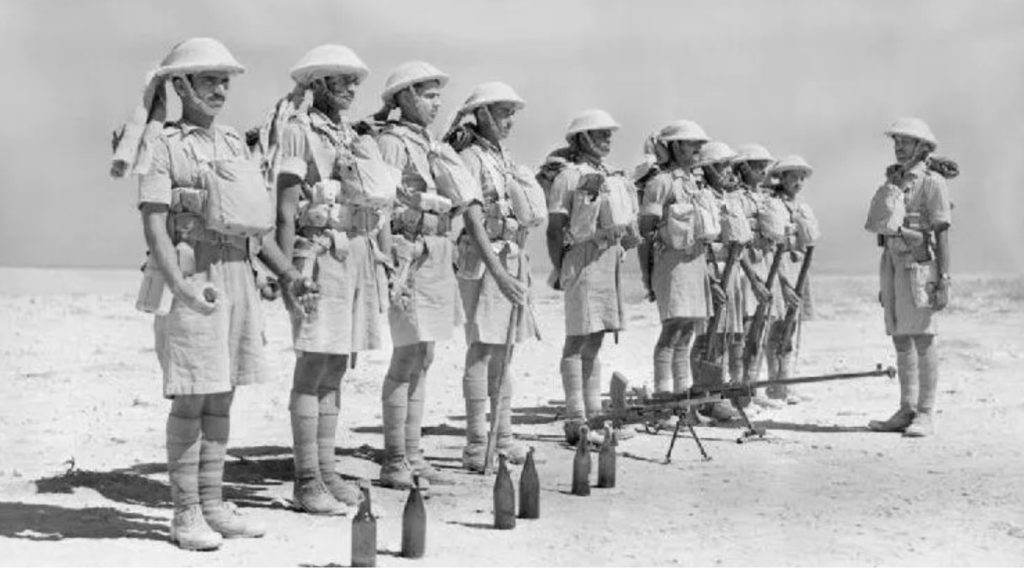
Key Points
- Background: Individual Satyagraha emerged in response to the August Offer of 1940 during World War II.
- Rejections: Both Congress and the Muslim League rejected the August Offer.
- Gandhi’s Caution: Mahatma Gandhi, considering the war context, was cautious about launching a disruptive Civil Disobedience Movement.
- Immediate Struggle Advocates: Some leaders, including Congress Socialist leaders and the All India Kisan Sabha, favoured immediate action.
- Objectives:
- Showed that nationalist patience didn’t signify weakness.
- Conveyed public disinterest in the war and the distinction between Nazism and India’s dual autocracy.
- Provided another chance for the government to accept Congress’s demands peacefully.
- Method: Satyagrahis demanded freedom of speech for anti-war declarations. If not detained, they would replicate these actions in villages and initiate the “Delhi Chalo Movement.”
- Early Satyagrahis:
- Vinoba Bhave was the first.
- Jawaharlal Nehru followed.
- Impact: By May 1941, over 25,000 individuals had been convicted for participating in Satyagraha, displaying Indian unity and patience.
- Cripps Proposal: Individual Satyagraha influenced the Cripps Proposal, which differed significantly from the August Offer, providing a blueprint for India’s partition.


Background and Emergence of Individual Satyagraha
During World War II, the British Government sought Indian cooperation and made the “August Offer” announcement on August 8, 1940. This offer promised the formation of a representative Indian body to draft a new Constitution after the war.
However, both the Congress and the Muslim League rejected the offer, and Mahatma Gandhi, dissatisfied with it, initiated Individual Satyagraha. These Satyagrahas, symbolically non-violent, were limited in scope, and Gandhi selected the Satyagrahis carefully. Individual Satyagraha continued for nearly a year, and Congress leadership and the public were growing impatient.
The Government responded by passing ordinances limiting freedom of expression, press, and the right to form associations. Nationalist workers, especially those on the left, faced harassment, arrests, and imprisonment. The British Government was preparing to suppress the Congress if it attempted a mass movement.
In this situation, Indians decided to demonstrate their patience was not weakness. They called upon Gandhi to lead once more, and he decided to initiate limited Satyagraha on an individual basis in various localities.
Satyagrahis demanded freedom of speech to oppose war participation, declaring it wrong to support the British war effort with men or money. Vinoba Bhave and Jawaharlal Nehru were among the early Satyagrahis, drawing large crowds. If not arrested, Satyagrahis moved into villages and began a ‘Delhi Chalo’ (March to Delhi) movement.
The Individual Satyagraha had a dual purpose: it expressed Indian political sentiments while enabling a peaceful acceptance of Indian demands by the British Government. Additionally, it prepared Indians for future struggles, restructured the Congress organization, and mobilized people. By May 15, 1941, over 25,000 Satyagrahis had been convicted of civil disobedience, furthering the political awakening of the masses.

Objective of Individual Satyagraha
The main objective of Individual Satyagraha was to dispel the notion that nationalist patience was a sign of weakness. Additionally, it aimed to emphasize the lack of public interest in the war and underscore the differences between Nazism and the dual autocracy in India. This non-violent protest provided the government with another opportunity to accede to Congress’ demands peacefully.
Satyagrahis demanded the right to freely express their opposition to the war by making anti-war declarations. If the government did not detain them, Satyagrahis would replicate these actions in villages and initiate the ‘Delhi Chalo Movement.’
In summary, Individual Satyagraha sought to:
- Demonstrate that nationalist patience was not a sign of weakness.
- Express the public’s disinterest in the war and their inability to distinguish between Nazism and India’s dual autocracy.
- Offer the government another chance to accept Congress’ demands peacefully.
Background and Leaders’ Actions
Leaders are Vinoba Bhave , Jawaharlal Nehru , Brahma Dutt.
Vinoba Bhave initiated Individual Satyagraha from Paunar on October 17, 1940, urging people not to support the government’s war effort due to the absence of a Provisional National Government, India’s forced entry into the war without consent, and restrictions on freedom to speak against the war. He continued to make anti-war addresses in various locations but was detained on October 21 and sentenced to three months in jail.
Following Vinoba Bhave’s arrest, Jawaharlal Nehru was named the second Satyagrahi. However, he was detained on October 31, 1940, at the Cheoki train station near Allahabad for violating the Defence of India Rules. Nehru’s arrest caused widespread protests and even garnered the attention of the British government, leading to a special consideration request by Winston Churchill.
Brahma Dutt, an inmate of Gandhiji’s ashram, was chosen as the third participant in Individual Satyagraha.
Impact of Individual Satyagraha
It allowed the British government to peacefully accept Indian requests while also expressing the strong political feelings of the Indian people. Gandhiji and the Congress were reluctant to exploit Britain’s predicament and humiliate her war effort by inciting a widespread revolt in India due to their anti-Nazi sentiments. Gandhiji was also beginning to organize the populace for the impending conflict.
The structure of the House was being changed, with opportunistic elements being identified and removed. Most significantly, people were informed, inspired, and politically mobilized. By May 15, 1941, more than 25,000 Satyagrahis had been found guilty of individual civil disobedience. Many more lower-level political employees were permitted to labour for free by the government.
Before Gandhiji called a halt to the individual satyagraha campaign for the Christmas holiday, 29 ex-ministers, 11 members of the Working Committee, 176 members of the All-India Congress Committee, and 400 members of the Central and Provincial Assemblies had been arrested, including prominent figures like Maulana Azad and Sardar Vallabhbhai Patel.
On January 5, 1941, the campaign resumed and quickly gained traction. By the end of January, the total number of voluntary arrests had surpassed 2,250. The enthusiasm of the volunteers offering themselves up for arrest was incredible. Within a few months, over 20,000 people had been convicted. When the satyagrahis were released from prison, they offered themselves up for re-arrest, with thousands constantly imprisoned, sacrificing all comforts. The government eventually released all the satyagrahis in early December 1941.
M.C.Q.
Q. Gandhiji decided to launch “Individual Satyagraha” due to dissatisfaction with
A) Government of India Act 1935 , which eroded autonomy of local bodies
B) State of untouchables in the country
C) August offer made by the British during the course of second World war
D) Religious intolerance in the countrysideAnswer : C
